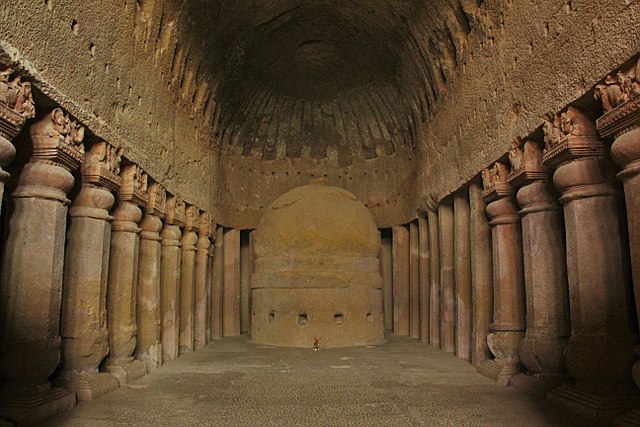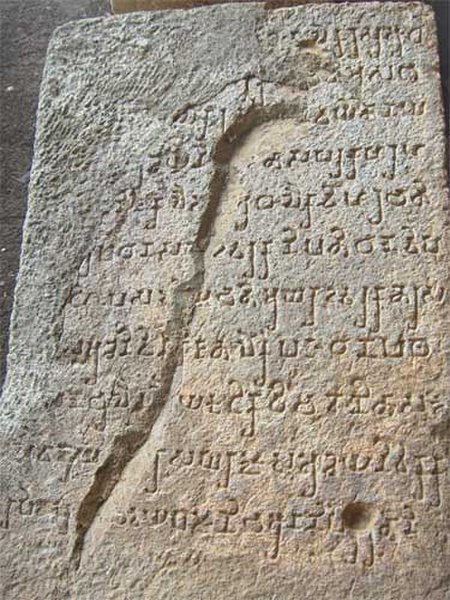The Kanheri Caves are a group of caves and rock-cut monuments cut into a massive basalt outcrop in the forests of the Sanjay Gandhi National Park, on the island of Salsette in the western outskirts of Mumbai, India. They contain Buddhist sculptures and relief carvings, paintings and inscriptions, dating from the 1st century CE to the 10th century CE. Kanheri comes from the Sanskrit Krishnagiri, which means "black mountain".
Chaitya hall with stupa, Cave 3
A Brāhmī stone inscription at Kanheri, veranda of the Great Chaitya.
The caves as viewed from the base of the hill.
Rock cut stair leading to Kanheri.
Indian rock-cut architecture
Indian rock-cut architecture is more various and found in greater abundance in that country than any other form of rock-cut architecture around the world. Rock-cut architecture is the practice of creating a structure by carving it out of solid natural rock. Rock that is not part of the structure is removed until the only rock left makes up the architectural elements of the excavated interior. Indian rock-cut architecture is mostly religious in nature.
Cave 19, Ajanta, a 5th-century chaitya hall
Kailash Temple, Ellora cave 16
Saptaparni Cave, a retreat of the Buddha.
The famous carved door of Lomas Rishi, one of the Barabar Caves, dated to approximately 250 BCE, displaying the first known Maurya reliefs.








